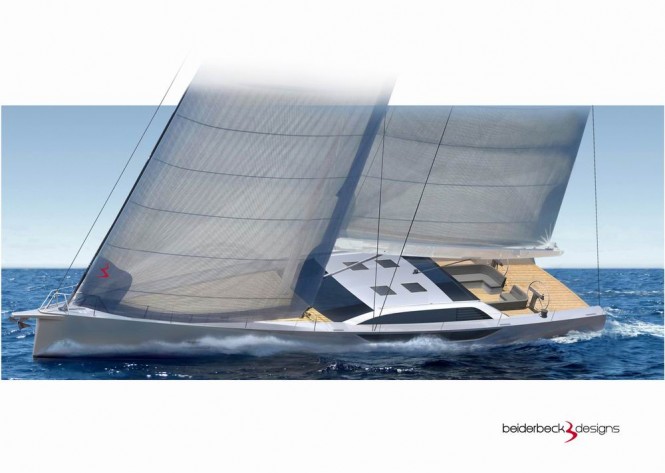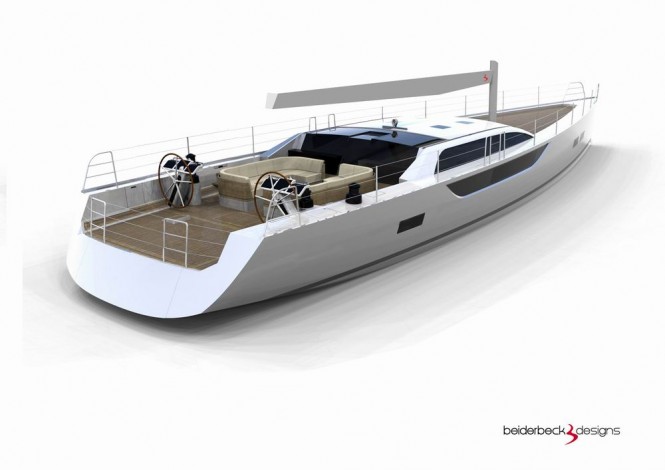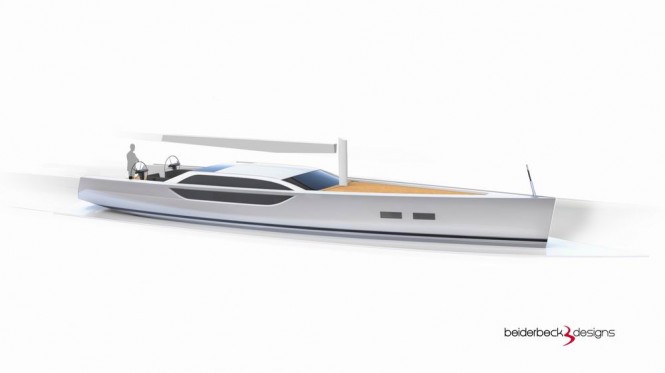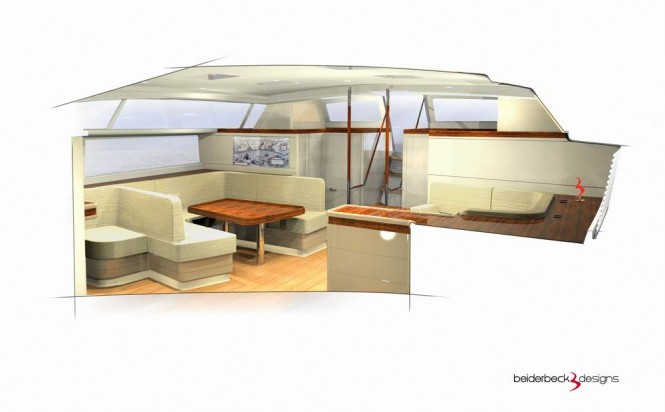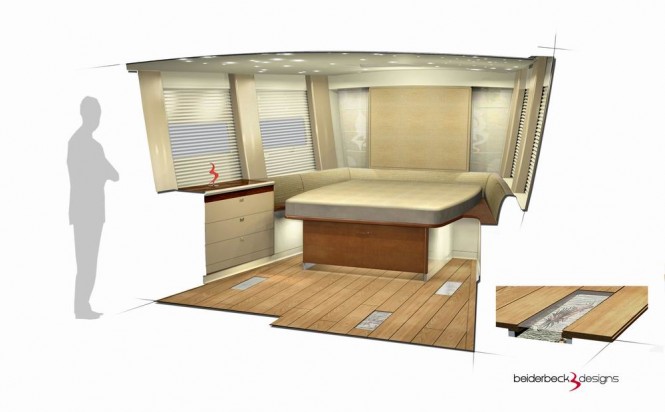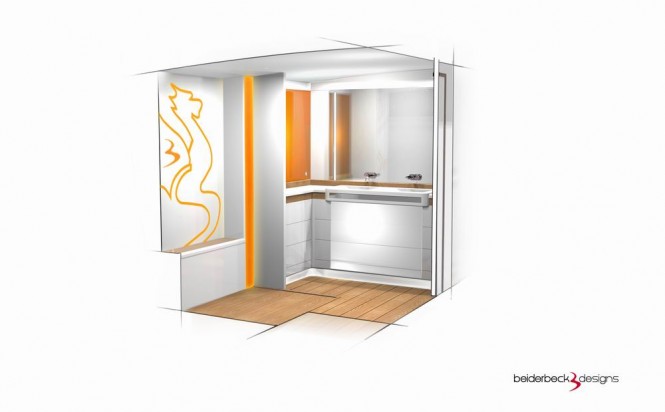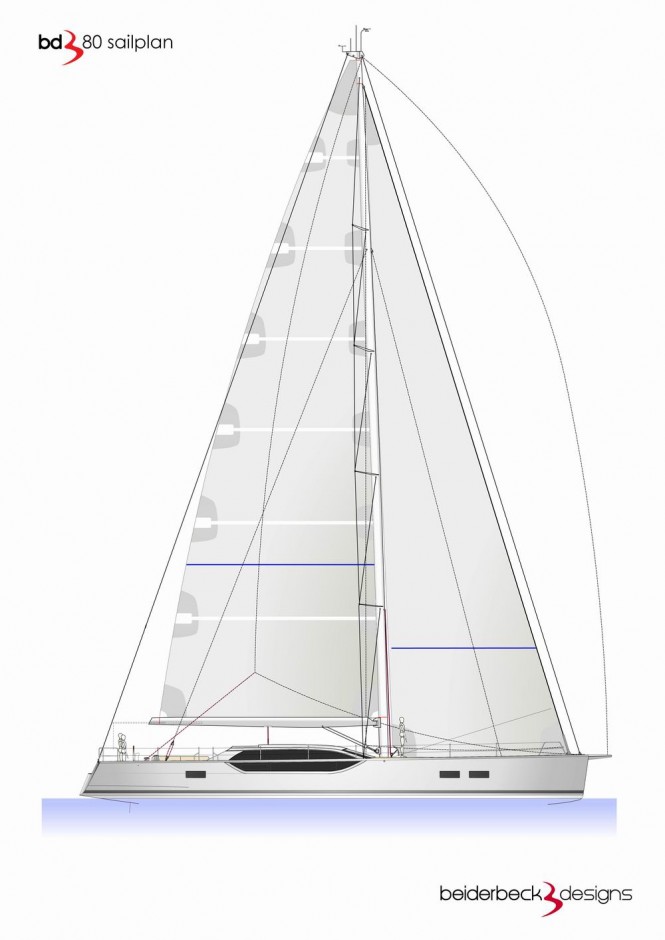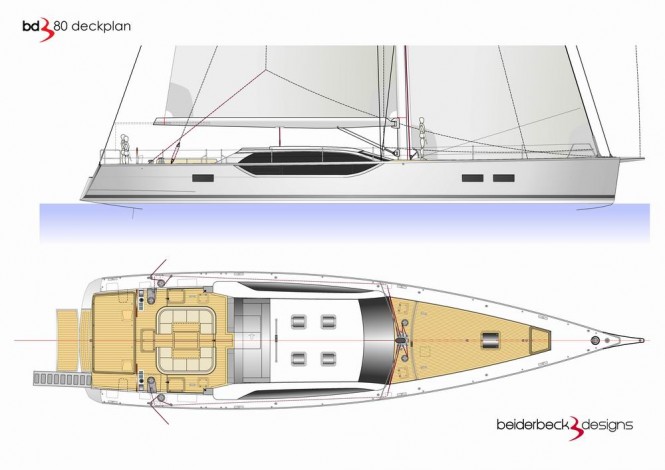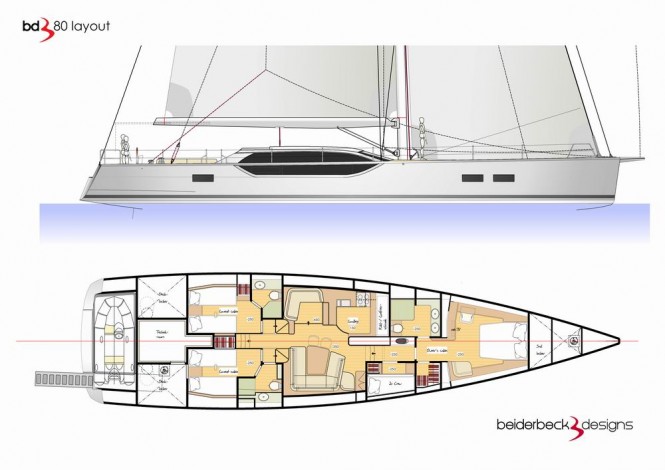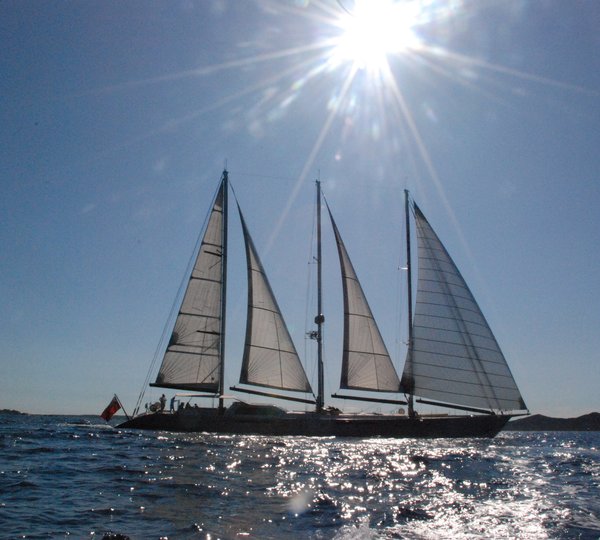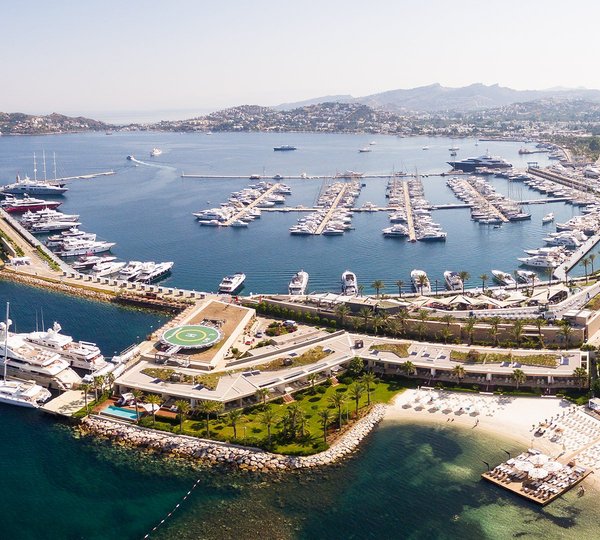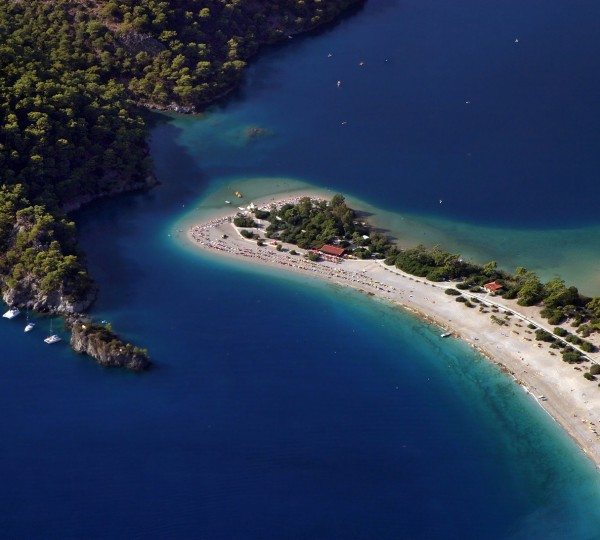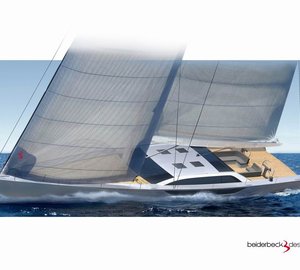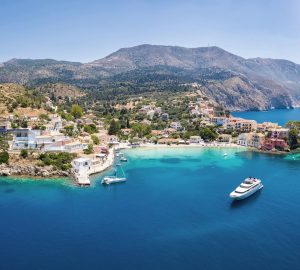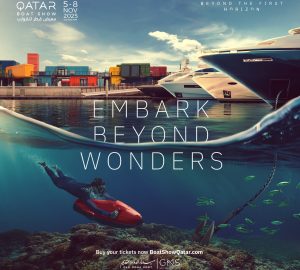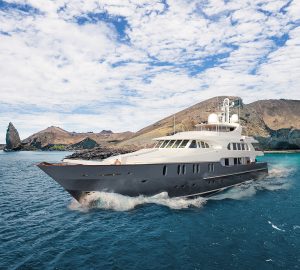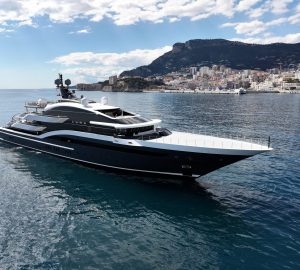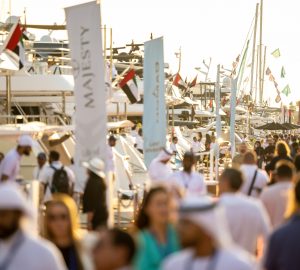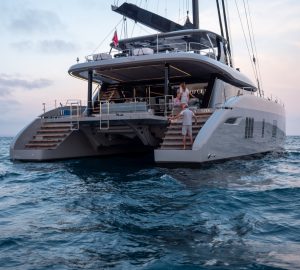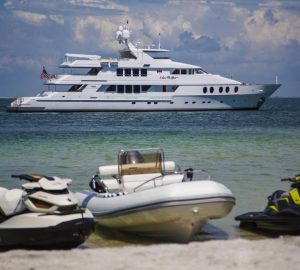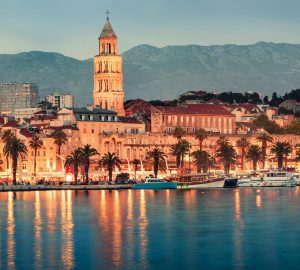When the owner wishes a vessel without deck saloons, but still wants to be able to look out over the water from the seating area of his sailing yacht, this presents quite a challenge for the designers. But the creative minds at beiderbeck designs in Bremen, a member of the DEUTSCHE YACHTEN – Superyachts Germany working group, have come up with an innovative solution in the new 80-foot sailing yacht Bd80. More than this, they have designed a versatile dream ship, incorporating sophisticated technology for an owner with unusual taste. Currently under construction at Cyrus yard in Turkey, the 24-metre superyacht Bd80 is a lovely High Tech Cruiser, scheduled for launch this spring in Antalya, Turkey.
Luxury yacht Bd80, unique in many respects, is a yacht to satisfy the highest demands. The basic concept is that of a fast but luxurious cruising yacht which can be handled by small or larger crews. The objective is the sailing equivalent of comfortable road travel in a fast limousine.
“We have not permitted any compromise to be made at the expense of handling”, observe Tim Ulrich and Immo Lüdeling from beiderbeck designs.
The Bd80 yacht is strikingly beamy at 5.85 metres, and the owner’s love of space soon becomes clear both above and below deck. During the design process the yacht’s overall length was extended from 76 to 80 feet, or just on 24 metres, by the addition of a bowsprit. This creates extra foot length for the 240 m2 Code Zero when reaching. Higher on the wind the Bd80 sails with a 125 m2 self-tacking jib. The 173 m2 mainsail – made by the French firm Incidences, like all the sails – furls into the boom and is sheeted mid-boom.
Thus the cockpit is kept completely clear of trip hazards, as practically everything seems to be retractable or concealed and virtually invisible. The halyards run in narrow channels beneath the unobstructed side decks. Magic trim hydraulic cylinders do all the work at the touch of a button. The owner has some professional experience in the area of control engineering and contributed his expertise and a wealth of ideas to make his wishes a reality.
The Bd80 superyacht’s clean finish in metallic white, black and gleaming stainless steel give her an attractively cool appearance. Composite built in glass and carbon fibre, with a shallow superstructure and a carbon rig by Hall Spars with many painted details, she has something of the look of a racing yacht at first sight. And the intrinsic values also show that the German client does not like to be overtaken. The drop keel from APM in Milan increases the yacht’s draught from 2.70 to 4.40 metres.
The technology of the double rudder system from French firm JP3 Steering Systems is suitable for long-distance yachts in a round-the-world race. Even the small details such as the anchor fluke made of titanium to save weight are in the high-end sector. Although tremendously powerful, this is however a cruising yacht with a conventional backstay and a 3.25-metre jet tender parked in the stern garage. A hydraulic cylinder in the main boom roller lifts the tender easily into the water. Because of the completely new window arrangement, strength calculations for the weight-bearing structures were performed by Gurit (formerly SP Systems) in an extensive FEM study and their construction was supervised by the independent composites expert Igor Ljubobratovic. The Bd80 yacht weighs just under 36 tonnes and leaves nothing to be desired in the way of comfort.
The low-cut hull windows already reveal how the all-round views from below deck have been achieved. The U-shaped sofa suite for up to ten people is arranged in such a way that you can see out from virtually every seat. But there are also pleasing views at closer range, as the interior of warm, bright surfaces accentuated with high gloss walnut and Moondust coloured paintwork is eye-catching in itself. A band of discreet leather upholstery continues the line of the windows.
The interior is embellished with a historical sea chart at the same height. Motifs from the chart are repeated in the floor covering, while sections of it are enlarged and printed on paper to feature in the decoration of the floor lighting. Various elements break up the veneer planking here and there; in the deck lighting, tiny spotlights even pick out the star signs of family members.
The Bd80 yacht has her own logo with a dragon and a mermaid. It appears on sailcloth next to a leather wall panel in the owner’s cabin, and also in his wet cell as an illuminated sign in amber next to striplights of the same colour from Yachtlite, a synergy from the DEUTSCHE YACHTEN working group. Here again, individuality is written large.
The partitioning of the cabins can be adapted to suit the yacht’s occupants. The twin single beds in the two aft guest cabins, each with its own wet cell, can be pushed together to form a double bed, while the Pullman-style top berth in the crew cabin folds away completely. If there is a small child on board the cabin door can be moved and hung in a second frame so that the cabin becomes part of the parents’ quarters.
Amongst all the other clever details, the walk-in wardrobe seems rather standard. The seat backs in the saloon can be adjusted forward for dining. The plasma screen TV rises up electrically from the sideboard. Only a hatch cover in the foredeck reveals that below it lies a locker storing the most frequently needed equipment close to hand. Because the genoa comes right down to the deck and restricts the field of vision, a forward-facing camera mounted on the bowsprit transmits the view ahead to the twin helm stands.
Fishing rod holders are integrated into the taffrail, and all the carbon guard rails are painted white. Directly below the cockpit there is an unusually large technical room and behind it the door of the tender garage which opens upwards, as the gangway, also hydraulically operated, and swim platform fold out from the transom.
The galley is by Miele, the below-deck furler by Reckmann, both also members of the DEUTSCHE YACHTEN working group. Here again the owner attached importance to using German suppliers where possible or otherwise favoured European firms, who were all very enthusiastic about the Bd80 yacht project. The deck fittings were supplied by Lewmar and Niro-Petersen, the flush deck hatches by Solimar. The six-cylinder 190 HP engine from Steyr in Austria is power to weight ratio optimised. Dutch consultant Jelmer Wijma assisted the yard with execution of the systems, while Alewijnse was responsible for all the automation down to the remote monitoring system.
The careful thought that has gone into the design of superyacht Bd80 is no less apparent in the cockpit, where the entire aft wall of the superstructure including the automatic sliding door is made of glass. A shoe locker is at hand for visitors’ boots, while the welcome drinks are stored in the refrigerator.
The bimini struts extend in a trice to support a sunsail which shades the whole cockpit, including the generously proportioned seating island with a table that sinks down into the floor when the yacht is under way. The yard made a wooden model of the table as a trial and this was already so convivial that many of the build discussion meetings held around it continued deep into the night.
Specifications of Bd80 yacht
Length overall: 23.97 m
Beam: 5.85 m
Draught: 2.70 to 4.40 m
Displacement (unladen): ca. 36 tonnes
Ballast: 12.5 tonnes
Construction: GRP/CFP sandwich construction
Mast height above water: 34.60 m
Sail area on the wind: 298 m2
Mainsail: 173 m2
Jib: 125 m2
Sail area downwind: 423 m2
Motorisation: 190 HP Steyr

